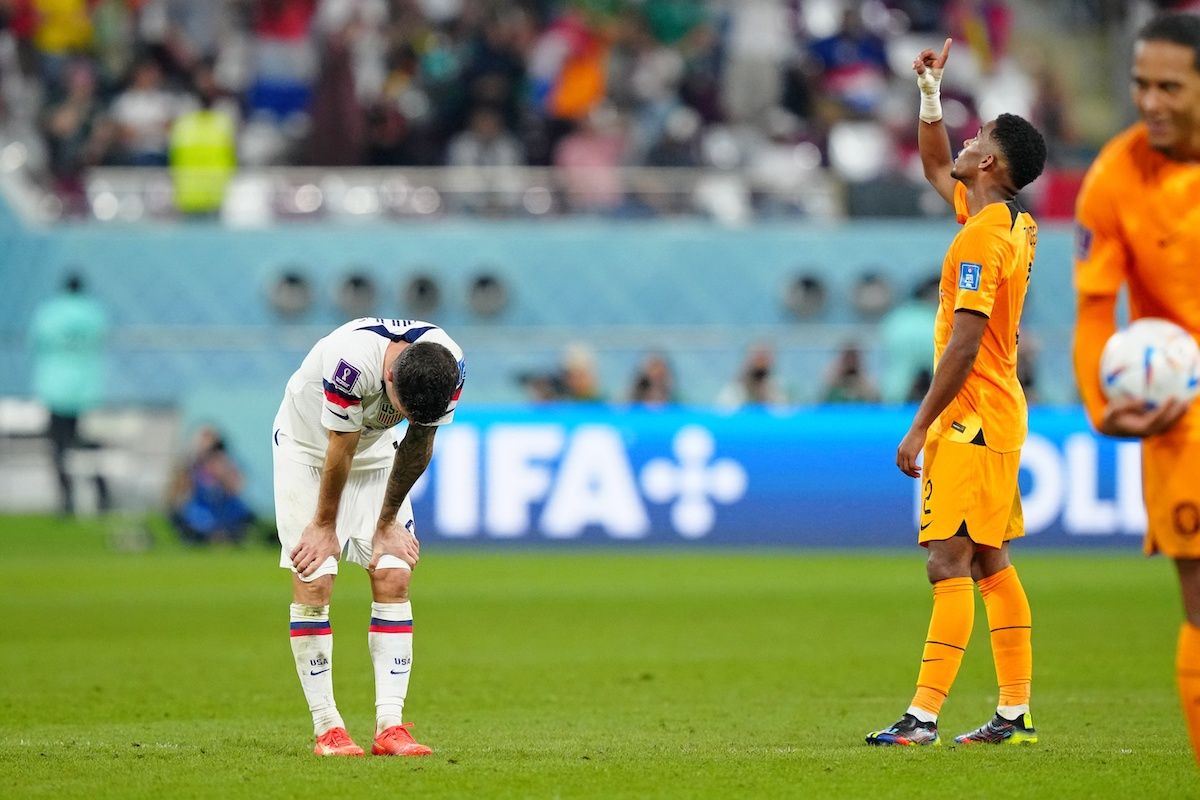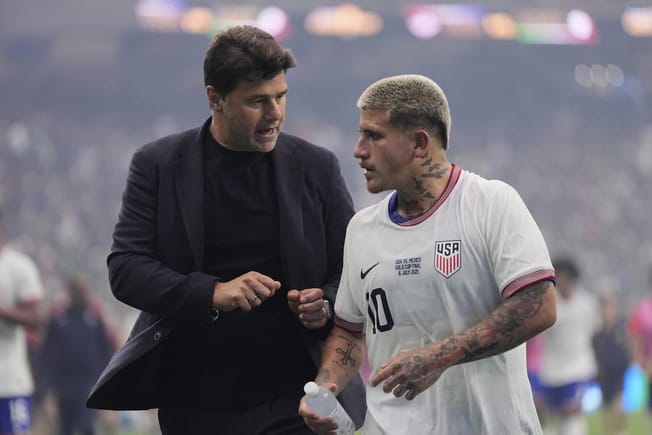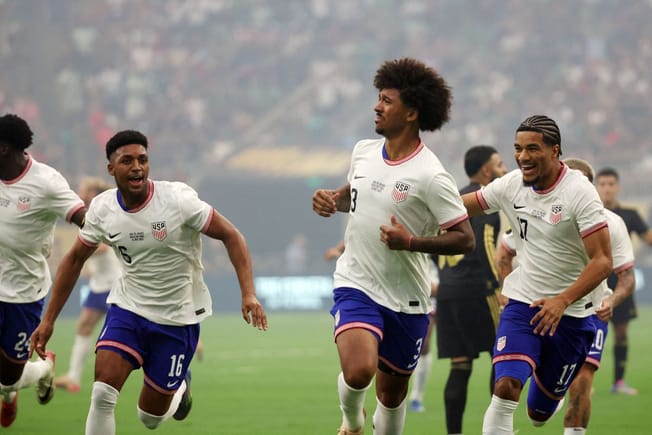Quick Hits
- After conceding an early goal to the Netherlands in the World Cup’s Round of 16, the United States never truly got back into the game
- Here’s why the U.S. struggled to create chances in their 3-1 loss on Saturday
After never trailing in the group stage of the 2022 World Cup, the United States conceded an early goal against the Netherlands on Saturday in their Round of 16 clash…and then they never caught up.
The Netherlands, who beat the U.S. 3-1, were happy to sit off the ball and invite Gregg Berhalter’s team to attack. Dutch manager Louis van Gaal trusted a unique defensive scheme in the midfield to suffocate the United States men’s national team. Van Gaal’s approach clearly paid dividends.
In terms of shape, the Dutch lined up in a 3-5-2 or 3-4-1-2 formation. The three central midfielders in their system were tasked with man-marking their American counterparts. Berhalter used a 4-3-3 shape with the usual trio of Tyler Adams, Weston McKennie, and Yunus Musah in the middle, but their impact was negligible because of the opposing tactics.
Passing patterns that proved useful for the United States in previous matches were less effective because of the Netherlands’ man-oriented strategy, and the USMNT turned to wonky, unexpected runs and positioning to try and break through. Let’s look at an example.
MAN-MARKING DEFENSE
In this second half sequence, center back Walker Zimmerman started a move from his right center back spot. Adams, playing as the No. 6, drifted deep to the left side of the backline, and right back Sergino Dest slid from the wing into the center of the field to give Zimmerman an option down the middle. All the while, Dutch forward Cody Gakpo tracked Adams and supported his team’s two-forward press.

Adams’ low position, which he moved into during several moments throughout the game, dulled his impact. The Leeds midfielder is most effective dictating play from the central areas with a full 180 degrees of passing angles. When Adams received the ball on the sideline, half the field is suddenly out of play. Dest, meanwhile, was a revelation in the 1-0 win over Iran by playing with great aggression on the overlap. He, too, was stunted by a change in role, limited in his ability to provide dynamic moments.
As the ball lofted towards Adams, Musah moved deeper as well. Musah’s run was tracked by another Dutch midfielder, assuring that any touch from the American midfielder would be under immense pressure. McKennie sat higher in the center circle, but the angles taken by the Dutch midfielders as they closed to their marks cut off clear passing lanes towards him.
Musah and Adams limited their impact by dropping low, and the Dutch mostly denied the more advanced McKennie with their intelligent positioning.

Now, Adams did indeed play the tight-angle pass to McKennie, as you can see down below. But the third and final Dutch central midfielder emerged to close down the Juventus midfielder. Simultaneously, Gakpo stepped to Adams on the left.
The man-marking scheme used by van Gaal never gave the USMNT a moment to breathe.
That said, the United States’ lack of rotation and movement in possession compounded the problem. Antonee Robinson – the U.S.’s left back – was nowhere in sight on this play, and neither Christian Pulisic nor Gio Reyna dropped down from their forward roles to support the move. When midfielders come low to support buildup, as seen in this sequence, attackers must drop to create passing options. That isn’t happening here.

After McKennie received the ball, he tried to play a quick return pass to Adams, but it was cut out by the Dutch. Their triangle of man-markers in the middle never lost their sense of rotation and organization.
At this point, the rest of the American attackers come into frame. Robinson is higher up the pitch than any other U.S. player, and Reyna is only just beginning to drop in as a passing option. Reyna then had to recover to stop a lethal Dutch counter attack instead of receiving the ball and running downhill. This entire passage of play in the second half represents the disconnection that doomed the United States’ offense for much of their Round of 16 match.

This World Cup had moments of joy for the United States in attack, but those highlights came when their brightest stars could get touches in the final third.
The Netherlands’ man-marking scheme rarely allowed that to happen, and now we’ll have to wait until 2026 to get more of that joy from a talented United States squad on the biggest stage.







Comments